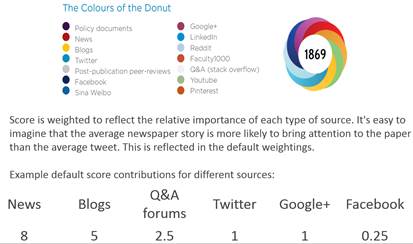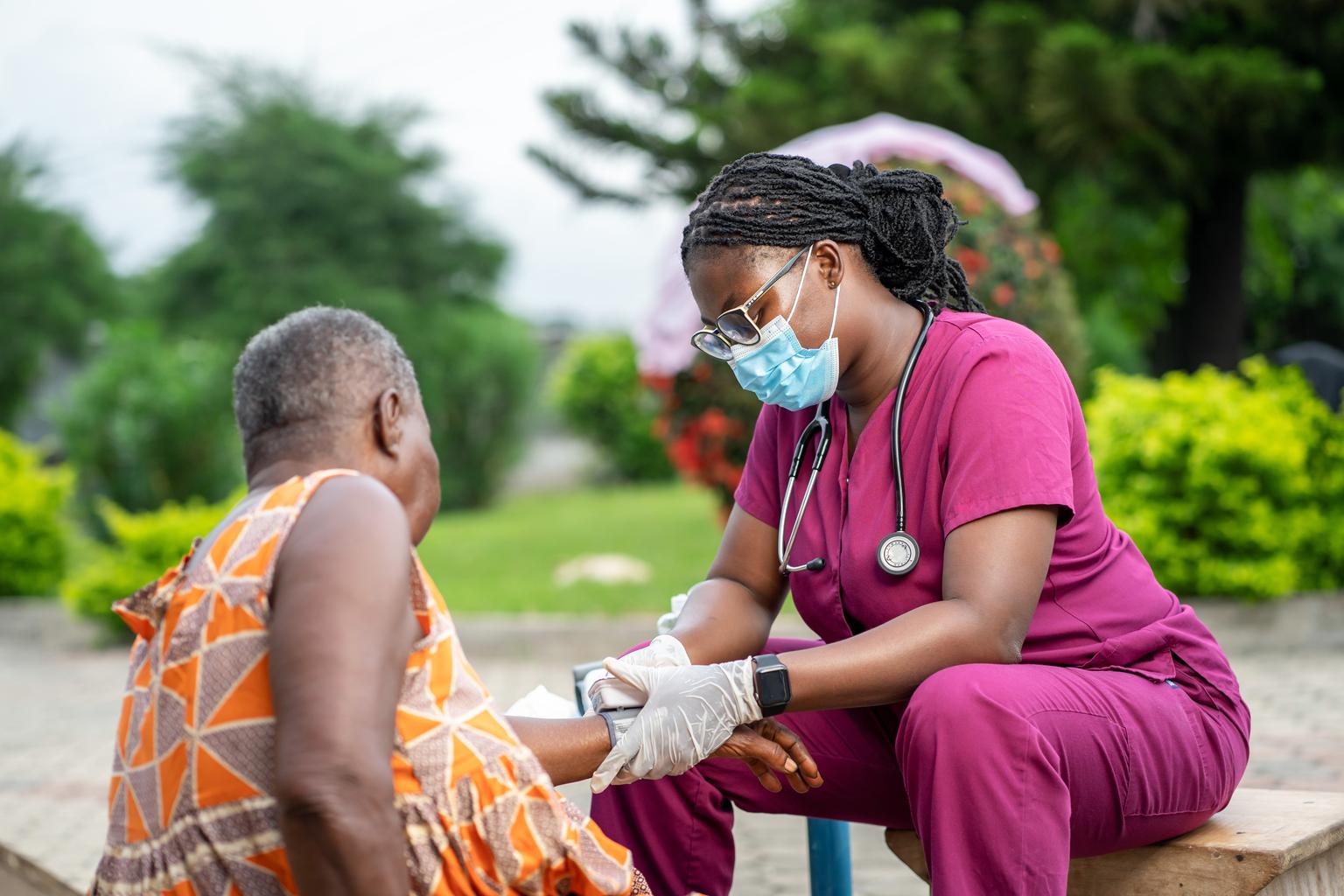Think of altmetrics on a continuum, with scholarly impact on one end to popular and societal impact on the other end.
By: Michelle M. Volesko Brewer, Librarian/Market Intelligence Manager, Wolters Kluwer Health
As an author, you might be curious about the altmetric score and how altmetrics can help you. Fundamentally, altmetrics concerns the measurement of the use of your research article beyond the traditional measures of a journal impact factor, which uses citation counts in scholarly information sources. There are many types of “use” measured by altmetrics—mentions in Wikipedia, social media like Twitter, saves in Zotero, links in bookmarking services like Delicious—and much more. Altmetrics measures uses in scholarly and non-scholarly outlets. Think of altmetrics on a continuum, with scholarly impact on one end (traditional citations and bookmarks in reference management databases) to popular and societal impact on the other end (tweets and Facebook mentions).1
The list below represents many of the data sources and types of data tracked for the research outputs noted. For some sources, only one type of research output is tracked; for others, several may be counted. Not all altmetrics sources or aggregators use the same terminology for their measures, count the same metrics, or count the metrics in the same manner, frequency, or with the same methods. Some may employ weighted measures too for some metrics. Thus it is not statistically correct to compare altmetrics scores across aggregators or social media. The following list includes overlap to familiarize you with the terms that altmetrics aggregators use and report to you.
- Usage: Can include clicks on your works, downloads of the article, views, library holdings, or plays of a video.
- Readership: Can include number of views, saves, downloads, comments, or scholarly (or popular) mentions (sometimes called buzz) on publisher sites or other integrated sites.
- Captures: A term that counts a bookmark to your article.
- Twitter: Number of tweets that mention the resource and/or the number of Twitter users that have tweeted (or re-tweeted) a publication.2
- Reference managers: Number of “saves” in online reference managers.
- Blogs: Number of times a publication has been mentioned in blogs.2
- Mentions: Some measures count blog posts, comments, reviews, and Wikipedia links as a mention.
- Social networking platforms: Number of links or references to the resource.
- Number of discussions: Recommendations or copies made of the resource.
- Facebook walls: Number of times a publication has been mentioned on a wall on Facebook.2
- Google+: Number of users that have mentioned the publication.2
- News outlets: Number of mentions of scholarly articles in magazines and news2 including mainstream media and press releases.
- Citations: Social media counts citations from non-traditional sources like citation indexes, patent citations, clinical citations, and public policy documents.
- Wikipedia: Number of mentions of articles or other academic outputs in the English-language version.3
Altmetrics aggregation services
There are aggregation services that measure how much an author’s works are used within social media. To make better sense of the diverse altmetrics measures, and to save time, authors should use an aggregator service.4 There are currently three main products: Altmetric, Our Research (formerly Impact Story), and Plum Analytics.5 These services normalize the data for use by individuals, institutions, publishers, funders, and others. Authors can see how they compare to others and can access, see, and share the reports and reuse the data as needed. Not every service measures all social media, and not all services measure in the same way.
Availability of aggregation services to authors
Not all services are directly accessible via an author registration or individual subscription, which can be confusing. Altmetric.com and Plum Analytics data are licensed by institutions, though the data is available to authors for free via an institution or publisher page. Authors can see their data from these services on their article page from their journal publisher, or an author page, from their institution when they have faculty status, or via a library licensed database like Scopus. Altmetric.com also licenses to publishers or institutions.
Impact Story is available to the individual and uses data from Altmetric.com. The service is currently free to authors, supported by the Sloan Foundation, but it may or may not have an annual fee after a free access period. Impact Story uses CrossRef for article metadata and ORCID for author identity management.
Additionally, there are other services an academic institution may use like the Mendeley Institutional Edition (MIE) that functions as an analytics tool. MIE is built on top of Mendeley, so an academic institution can understand its research output4 and impact.
Other ways publishers and aggregators are helping authors is by putting the altmetrics data in context for interpretation. For example:
- Impact Story normalizes data by publication year and includes percentiles—it might, for example, note that a given paper has more readers on the online reference manager Mendeley than 97% of papers indexed that year.6
- Altmetric.com shows results normalized by journal, which allows fairer comparison of papers in discipline-specific publications.6
- Google Scholar Citations is a service that allows authors to track their publications and influence using Google Scholar metrics.4






